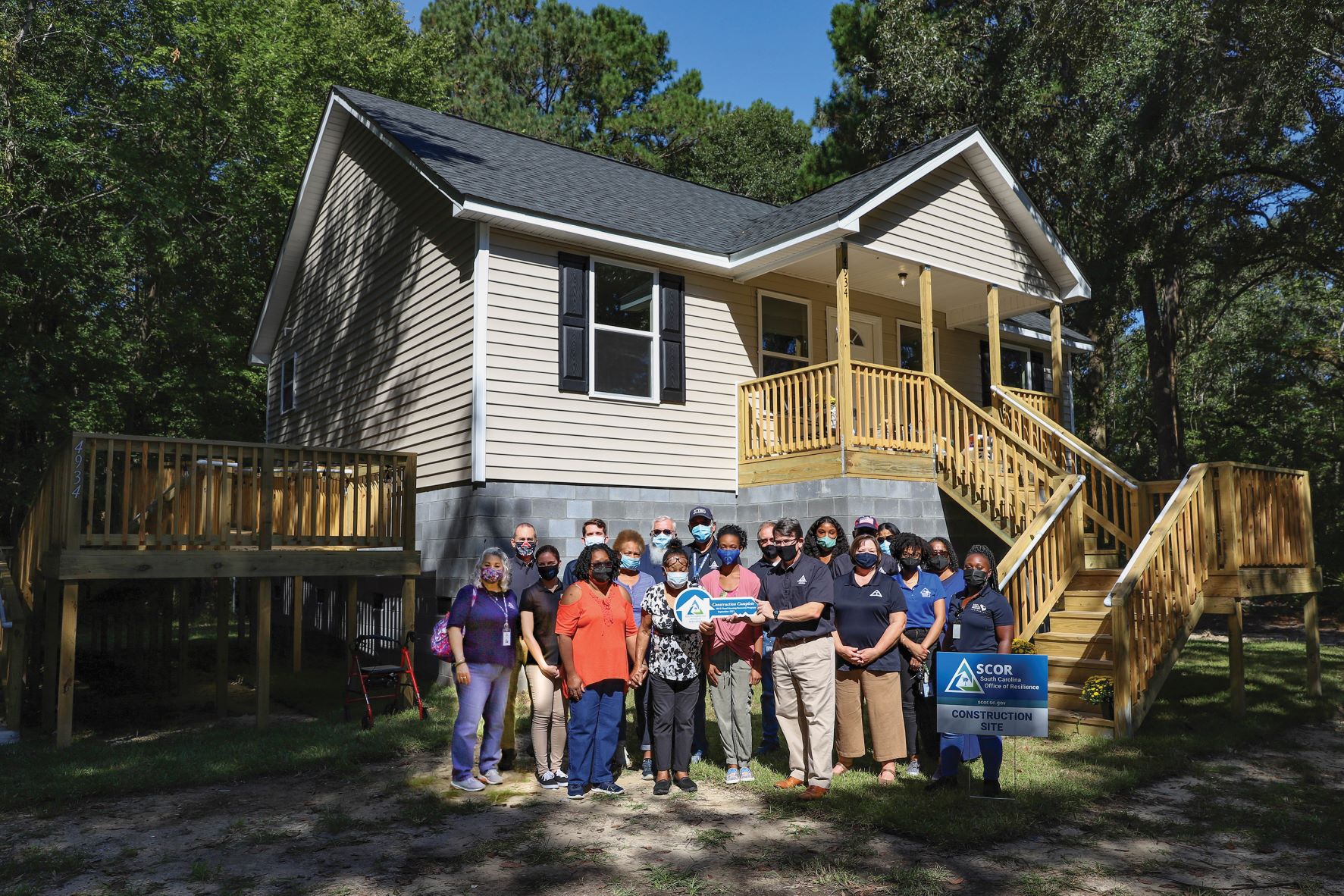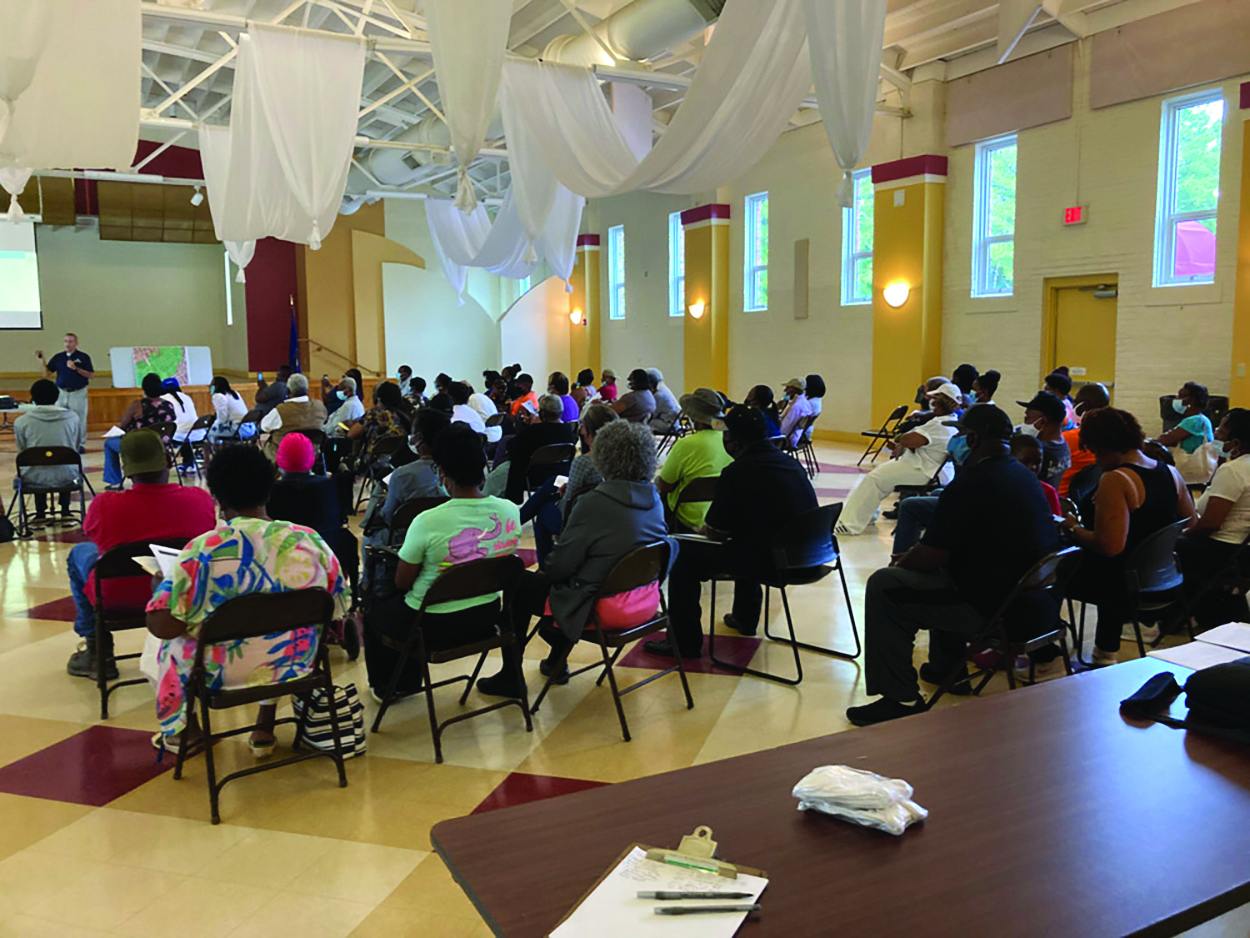Located on the Pee Dee River, the Town of Cheraw is no stranger to flooding. But the flooding damage that followed Hurricane Florence made clear — more so than any previous event — that something needed to be done to proactively manage stormwater and mitigate future events.
While federal programs are available to cover much of the cost of a stormwater management plan, it still can be difficult for smaller towns and cities to fund their share. That’s where the SC Office of Resilience stepped in — to use its mitigation federal funds match program to pay Cheraw’s cost. The stormwater master plan was the first step in a process that led to funding for buyouts of property in flood zones and infrastructure updates.
As South Carolina faces more severe weather events, sustainability projects have moved to the top of the priority list for many municipalities. Stormwater studies, with funding help from state and federal agencies, have taken place around the state, while some cities hire sustainability managers and work to figure out how to prepare for — and mitigate — the effects of a changing climate.

In September 2021, the SC Office of Resilience marked the completion of the final
house of the 2015 Flood Housing Recovery Program, which repaired or replaced
1,830 homes. Photo: SC Office of Resilience.
Ben Duncan, the state’s chief resilience officer, said the SC Office of Resilience first started as a disaster recovery office, working on everything from housing recovery to resilience planning, it also now works on infrastructure projects and home and property buyouts.
All of this is part of the path “to become a more resilient state,” Duncan said.
The office, using U.S. Department of Housing and Urban Development community development block grants, provided assistance in rehabilitating or replacing more than 3,000 homes that were damaged by the 2015 flood, Hurricane Matthew in 2016 and Hurricane Florence in 2018.
The SCOR mitigation program allows municipalities to apply for assistance with the development of a mitigation/resilience plan or study for their area, or apply for a grant to cover the required local matching funds for a federally funded mitigation projects. The municipalities use the planning documents to apply for money for infrastructure to reduce flood risks or home buyout projects to relocate residents out of flood-prone areas.
In Cheraw, an area around a park that flooded in Hurricane Florence is downstream from an Environmental Protection Agency Superfund site, where dangerous chemicals leached into the ground from an old production facility. The town purchased a few properties around the park, but needed another source of funding to continue the project. The state is buying out nine homes.
“So they’re [the nine homes] going to be out of harm’s way, they’ll be out of the floodplain, and the land has to be permanent green space in a buyout program,” said Eric Fosmire, chief of staff and general counsel for the Office of Resilience. “We will buy it in the name of the local government, and then it’s theirs. They can undertake a wholesale approach which Cheraw is going to do to expand the park there in that area and make sure it’s all clean.”
While some larger cities have staff and the capacity to write grants and undertake projects, part of the state office’s goal is to provide technical assistance for smaller communities. For cities and towns in the state’s 17 counties in particular peril, the office works to mitigate future disasters.

The SC Office of Resilience’s mitigation program hosts a town hall session in Bennettsville.
The program provides help with resilience plans and studies, and applying for matching grants.
Photo: SC Office of Resilience.
“We can do a plan or study on their flooding risks at no cost for them. We’ll pay for it,” Fosmire said. “We are trying to encourage small communities to come forward and tell us what their problems are.”
In October 2015, Forest Acres was hard hit by the heavy rains that brought a historic flood and caused dams to fail on the lakes and streams that run through the city’s neighborhoods.
In the years that followed, the city worked closely with Richland County and the SC Department of Natural Resources. It adopted Richland County’s stream buffer requirement. The SC Department of Health and Environmental Control improved permitting and oversight of many of the area’s dams, said Keith Lindler, the city engineer and building official for the City of Forest Acres.
“The county has updated regulations and so have we, because we are part of their permitting,” he said.
Lindler said Forest Acres is better prepared now to respond to flooding events, while updated standards are expected to protect new construction from rising waters.
He cited a housing development built around 2010 when flood standards for residential structures were already in place, causing the property to be built 2 feet above the flooding baseline. The homes were built on land that flooded heavily in 2015, and while they had water in their yards, the living space was unaffected.
“The standards worked,” Lindler said. “The same creek had older houses that were built in the 1950s and 60s with no standards. Several of those houses had 80 to 90% damage to the point where they had to be elevated 6 to 8 feet.”
He said other small cities faced with water and weather events should remember they are not alone.
“Call around. Make contacts with your state agencies involved in the flooding side of things. Maintain a good working relationship with your county or state partners,” he said. “We’re a small municipality. It makes sense for us to be covered under the broad permit Richland County has.”
The City of Columbia is a leader in addressing climate change issues, with its city council supporting the U.S. Conference of Mayors Climate Action Plan and forming a Climate Protection Action Committee in 2007. Columbia brought together more than 50 community leaders to examine the climate issue, leading to a plan that council adopted in 2008.
“Sustainability means meeting our own needs without compromising the ability of future generations to meet their own needs. In addition to natural resources, we also need social and economic resources,” said Mary Pat Baldauf, the city’s sustainability facilitator. “Our efforts today will help make America energy-independent, clean our air and water, improve fuel-efficiency of our vehicles, kick-start 21st century industries, and make our cities safer and more livable now and for future generations.”
The city’s sustainability program has enjoyed many successes in the past few years, including a 3-STAR Community Rating for national leadership in sustainability by the nonprofit STAR [Sustainability Tools for Assessing and Rating] Communities.
“At the time, STAR was the nation’s leading framework and certification program for evaluating local sustainability, encompassing social, economic and environmental performance measures,” she said. “STAR Communities has since been brought under the umbrella of the U.S. Green Building Council’s new LEED [Leadership in Energy and Environmental Design] for Cities program, which we hope to pursue soon. We were and still are the only South Carolina city to attain STAR certification.”
Baldauf’s advice for municipalities interested in starting or improving sustainability programs is to not reinvent the wheel, and to call on organizations that are available to assist cities in creating a program, including ICLEI-Local Governments for Sustainability and the Southeast Sustainability Directors Network.
“Be diligent and patient. A wise colleague once told me that sustainability is new to most people, and that change isn’t always easy to accomplish,” Baldauf said. “Continue to look at the big picture and celebrate even small successes.”
